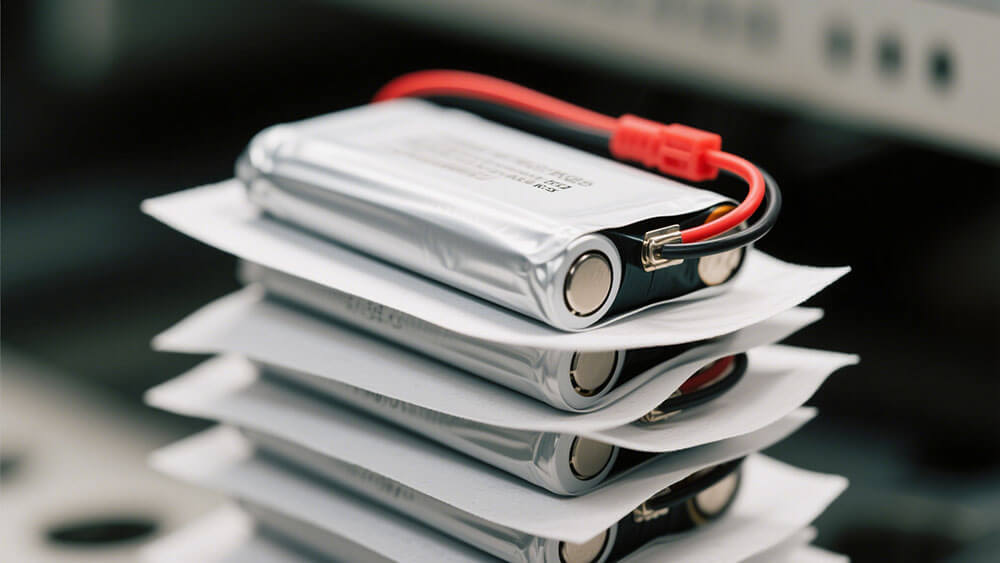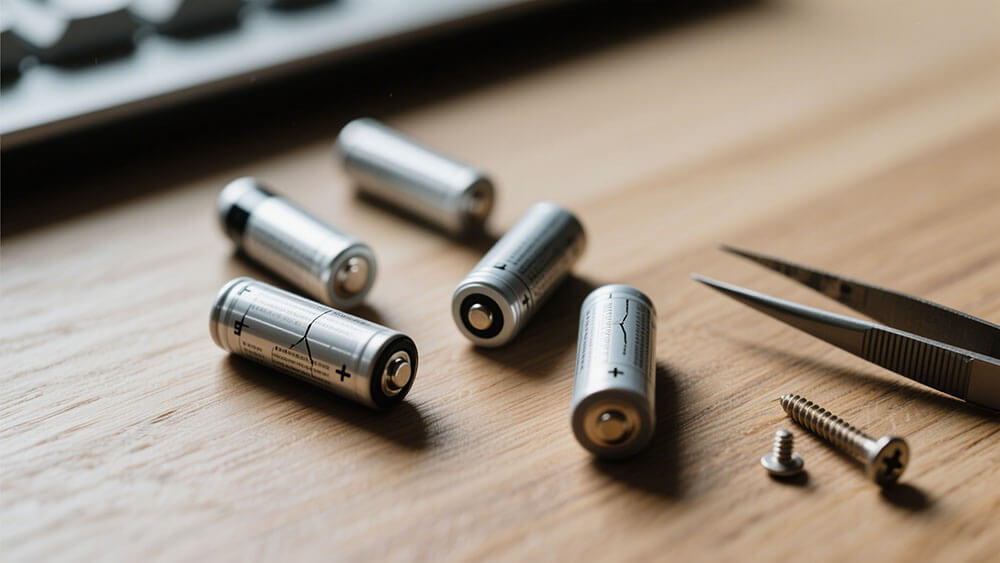
Lithium battery kits have revolutionized industries by offering reliable, high-performance energy solutions. Their integration drives advancements in electric vehicles, renewable energy, and consumer electronics. For example:
By 2030, electric vehicles could represent over 50% of new car sales in some regions.
Demand for lithium-ion batteries surged from 0.5 gigawatt-hours in 2010 to 526 gigawatt-hours in 2020, with projections reaching 9,300 gigawatt-hours by 2030.
This rapid growth makes it essential to learn about lithium battery kits to optimize energy systems and meet modern demands.
Key Takeaways
Lithium battery kits are important for today’s energy needs. They power electric cars and renewable energy systems.
Parts like battery management systems and connectors make them safer and work better.
Picking the right lithium battery depends on what you need, like how much energy it holds, how long it lasts, and how safe it is.
Part 1: Learn About Lithium Battery Kits

1.1 What Are Lithium Battery Kits?
Lithium battery kits are comprehensive energy storage solutions designed to meet the growing demand for efficient and reliable power systems. These kits typically include lithium-based batteries, along with essential components like battery management systems (BMS), connectors, and chargers. They are widely used in industries such as electric vehicles, renewable energy, and consumer electronics.
The need for lithium battery kits stems from their ability to enhance energy efficiency, safety, and performance. Engineers continuously innovate materials and designs to improve their functionality. For instance:
New anode, cathode, and electrolyte chemistries increase stability and energy density.
Advanced electrode architectures boost power output and lifespan.
By integrating these advancements, lithium battery kits provide a versatile solution for applications requiring high energy density and long cycle life.
1.2 Key Components of Lithium Battery Kits
Understanding the key components of lithium battery kits helps you evaluate their performance and suitability for specific applications. Here are the critical elements:
Battery Cells: These store and release energy. Lithium-ion batteries, for example, achieve energy densities of 60-270 Wh/kg, making them ideal for portable devices and electric vehicles.
Battery Management System (BMS): This ensures safe operation by monitoring voltage, temperature, and charge/discharge rates. It prevents overheating and extends the battery’s lifespan.
Connectors and Wiring: These facilitate efficient energy transfer between the battery and the device. High-quality connectors reduce energy losses and improve reliability.
Enclosure: Protects the internal components from environmental factors like moisture and dust, ensuring durability.
Each component plays a vital role in optimizing the kit’s features, such as capacity, voltage, and cycle life. For example, a 48V 200Ah battery can store 9.6 kWh of energy, making it suitable for industrial and renewable energy applications.
Tip: When selecting a lithium battery kit, prioritize components that align with your energy and safety requirements.
Part 2: Types of Lithium Batteries

2.1 Lithium-Ion (Li-ion) Batteries: Features and Use Cases
Lithium-ion batteries are among the most widely used energy storage solutions today. Their popularity stems from their high energy density, lightweight design, and versatility. These batteries power a wide range of applications, from consumer electronics to electric vehicles and renewable energy systems.
Key Features:
High Specific Energy: Li-ion batteries offer energy densities ranging from 100-200 Wh/kg, making them ideal for portable devices and electric vehicles.
Long Lifespan: With proper maintenance, these batteries can last between 500 to 2000 charge cycles.
Safety Features: Advanced battery management systems (BMS) ensure safe operation by monitoring temperature, voltage, and charge rates.
Use Cases:
Consumer Electronics: Smartphones, laptops, and tablets rely on lithium-ion batteries for their compact size and long-lasting power. In 2023, this segment accounted for over 31% of the market revenue. Learn more about consumer electronics applications.
Electric Vehicles (EVs): The automotive industry increasingly adopts Li-ion batteries due to their high energy density and efficiency. The electric and hybrid EV market is projected to be the fastest-growing segment.
Medical Devices: These batteries power critical equipment like portable ventilators and diagnostic tools. Explore medical battery solutions.
Note: Asia Pacific leads the lithium-ion battery market, holding over 47% of the global share in 2023.
2.2 Lithium Iron Phosphate (LiFePO4) Batteries: Features and Use Cases
LiFePO4 batteries, also known as lithium iron phosphate batteries, are renowned for their safety and durability. These batteries are a popular choice for applications requiring long cycle life and thermal stability.
Key Features:
Thermal Stability: LiFePO4 batteries resist overheating, making them one of the safest lithium battery types.
Extended Lifespan: They can endure 2000 to 5000 charge cycles, significantly reducing replacement costs.
Safety Features: These batteries maintain performance even when stored at low voltages for extended periods.
Use Cases:
Industrial Applications: LiFePO4 batteries power heavy machinery and deep-cycle batteries for renewable energy systems. Discover industrial battery solutions.
Emergency Backup Power: Their reliability makes them ideal for backup systems in critical infrastructure.
Electric Vehicles: These batteries are increasingly used in EVs due to their safety and long lifespan.
Tip: If safety and longevity are your priorities, LiFePO4 batteries are among the best lithium battery options available. Learn more about LiFePO4 batteries.
2.3 Lithium Polymer (Li-Po) Batteries: Features and Use Cases
Lithium polymer batteries, or Li-Po batteries, are known for their lightweight and flexible design. These batteries are commonly used in applications where space and weight are critical factors.
Key Features:
High Specific Energy: Li-Po batteries deliver excellent energy density, making them suitable for compact devices.
Flexible Design: Their pouch-like structure allows for custom shapes and sizes.
Safety Features: While generally safe, they require careful handling to avoid punctures or overheating.
Use Cases:
Consumer Electronics: Li-Po batteries power drones, wearables, and other compact devices.
Automotive Sector: Their lightweight design makes them a preferred choice for high-performance electric vehicles.
Robotics: These batteries are ideal for powering robots due to their high energy density and compact size. Explore robotics battery solutions.
Note: The global Li-ion pouch battery market is expected to grow at a CAGR of 9.7% over the next decade, reaching $174.48 billion by 2034. Learn more about lithium polymer batteries.
2.4 Comparing Lithium Battery Types: Pros and Cons
Choosing the best lithium battery depends on your specific needs. The table below highlights the advantages and disadvantages of various lithium battery types:
Battery Type | Advantages | Disadvantages |
|---|---|---|
Lithium Iron Phosphate (LiFePO4) | – Long life cycle (2,000+ cycles) | – Relatively low specific energy |
Lithium Nickel Manganese Cobalt Oxide (NMC) | – Good thermal stability and safety | – Performance can suffer in low temperatures |
Lithium Cobalt Oxide (LCO) | – High specific energy | – Short lifespan (500-1,000 cycles) |
Lithium Titanate (LTO) | – Delivers power over long periods in low-load applications | – Low thermal stability and safety concerns |
Lithium Manganese Oxide (LMO) | – Improved thermal stability and safety | – Specific advantages not detailed in the provided text |
Tip: For applications requiring deep-cycle batteries, LiFePO4 batteries offer the best balance of safety, longevity, and cost-effectiveness.
Part 3: How to Choose the Right Lithium Battery Kit

3.1 Evaluating Energy and Power Requirements
Selecting the right lithium battery kit starts with understanding your energy and power needs. These requirements vary significantly depending on the application, whether you’re powering electric vehicles, industrial machinery, or renewable energy systems.
Performance metrics also play a critical role in determining the suitability of a battery kit. Key benchmarks include:
Energy Density: Indicates how much energy the battery can store per unit volume.
Cyclability: Reflects the number of charge/discharge cycles before performance declines.
Efficiency: Measures how effectively the battery converts stored energy into usable power.
For high-load applications, such as powering electric vehicles or industrial equipment, prioritize kits with high energy density and efficiency. These metrics ensure optimal performance and longevity.
Tip: Use energy consumption data to identify inefficiencies and improve operational performance. This approach is especially beneficial for renewable energy systems.
3.2 Assessing Safety Standards and Certifications
Safety is paramount when choosing a lithium battery kit, especially for high-load applications like electric vehicles. Certified batteries adhere to stringent safety standards, ensuring reliable performance and reducing risks.
Here are some key certifications to look for:
Standard | Description |
|---|---|
ANSI/CAN/UL 2272 | Electrical systems for personal e-mobility devices. |
ANSI/NEMA C18 | Safety standards for primary, secondary, and lithium batteries. |
UL 1642 | Safety standard for lithium batteries. |
UL 2054 | Household and commercial battery safety standard. |
UL 2056 | Safety guidelines for power banks. |
UL 2595 | General safety requirements for battery-powered appliances. |
In addition to certifications, ensure the battery management system (BMS) complies with functional safety standards like IEC 61508 SIL. This standard evaluates the reliability of safety functions, particularly in hazardous environments.
Note: Batteries used in medical devices must meet biocompatibility standards and include safety features for patient proximity. Explore medical battery solutions.
By prioritizing certified kits, you can enhance safety and ensure compliance with industry regulations. This is especially critical for applications in infrastructure and security systems.
3.3 Considering Lifespan, Maintenance, and Cost
The lifespan and maintenance requirements of a lithium battery kit directly impact its cost-effectiveness. Lithium batteries, such as LiFePO4 and lithium-ion, offer extended lifespans and reduced maintenance compared to traditional lead-acid batteries.
Key factors to consider include:
Improved Energy Efficiency: Lithium batteries provide consistent power flow, reducing downtime and enhancing productivity.
Extended Lifespan: With lifespans ranging from 2,000 to 5,000 cycles for LiFePO4 batteries, replacement costs decrease significantly.
Reduced Maintenance: Unlike lead-acid batteries, lithium batteries require minimal upkeep, allowing you to allocate resources more efficiently.
The table below highlights the cost-benefit analysis of different battery types:
Battery Type | Efficiency (%) | Impact on ROI |
|---|---|---|
Lithium-ion | 90 – 95 | Maximizes usable energy, leading to greater savings and efficiency in solar energy systems. |
Lead-acid | 80 – 85 | Lower efficiency results in more energy loss, affecting overall savings. |
Saltwater | Similar to Li-ion | Offers comparable efficiency, but varies by manufacturer, impacting selection based on performance. |
Tip: Government incentives and credits can further reduce upfront costs, accelerating your return on investment.
For high-load applications, such as electric vehicles or industrial systems, investing in a high-quality lithium battery kit ensures long-term savings and reliability. If you’re unsure which kit suits your needs, consider consulting a custom battery solution provider like Large Power.
Understanding lithium battery kits is essential for optimizing industrial and commercial energy systems. Selecting the right type ensures cost-effectiveness, safety, and performance. For example:
Electric Vehicles: LiFePO4 batteries offer durability and thermal stability.
Renewable Energy: High-capacity batteries maximize efficiency.
Tip: Consult Large Power for tailored solutions that align with your energy needs.
FAQ
1. What are the main benefits of lithium battery kits?
Lithium battery kits offer high energy density, long lifespan, and low maintenance. They enhance performance in applications like electric vehicles, renewable energy systems, and portable electronics.
2. How do lithium batteries compare to traditional lead-acid batteries?
Lithium batteries outperform lead-acid batteries in energy efficiency, lifespan, and weight. They are ideal for industrial and portable power applications requiring reliability and durability.
3. Can lithium battery kits be customized for specific applications?
Yes, lithium battery kits can be tailored to meet unique energy and power requirements. Large Power provides custom solutions for industrial, medical, and security applications.






